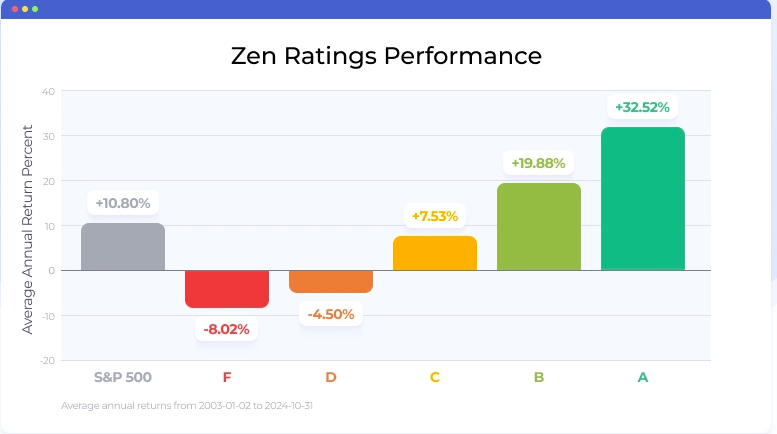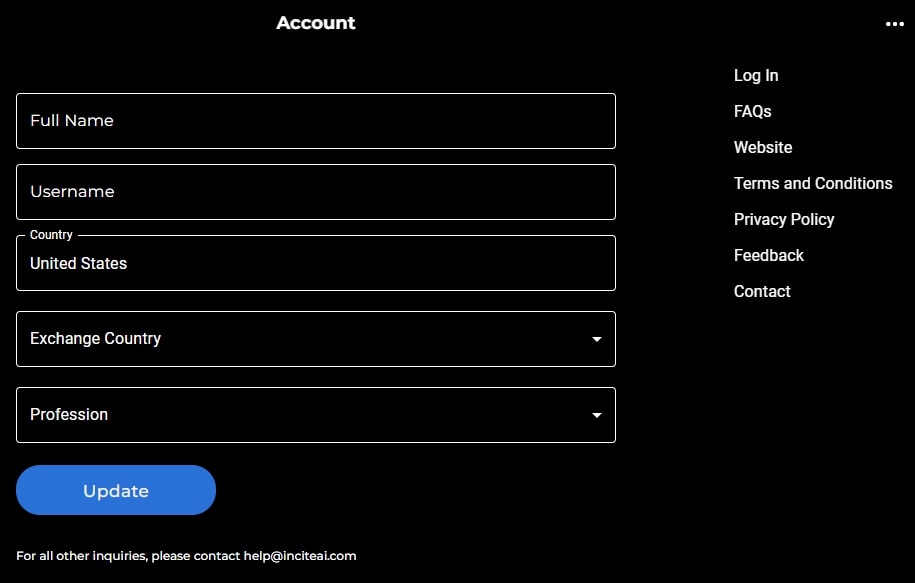Examining the price and cost of AI stock Predicting/Analyzing trading platforms is crucial to ensure you get value from your investment and avoid hidden charges or unanticipated expenses. Pricing structures differ widely, and it is essential to be aware of what you're receiving for your money. Here are 10 top suggestions to help you analyze the price and cost of these platforms.
1. Know the Pricing Model
Subscription-based platforms: Discover whether you are required to pay a monthly or yearly fee. Find out the features included with each level.
Pay-per-Use: Check if the platform charges per use (e.g. the amount of trades executed and data requests made, or forecasts).
Freemium model: Check whether the platform provides the free version with only a few features, and charges for premium features.
2. Compare Pricing Tiers
Check out the features offered by the various price levels, e.g. Basic, Professional Enterprise, Basic.
Scalability: Make sure your pricing levels match your requirements, regardless of whether you're a solo trader or a professional.
Upgrade flexibility: See if your plan can be easily upgraded or downgraded as your needs evolve.
3. Evaluate Hidden Costs
Data charges are a matter of fact. Find out if you have to pay extra for access to premium data.
Brokerage fees: Check whether the platform is charging additional costs for execution of trades or integration with brokers.
API usage - Assess whether there are additional costs associated with API access and/or high-frequency usage.
4. Demos as well as Free Trials
Trial period: Choose platforms that let you test the capabilities of their platform prior to making a commitment.
Trial limitations: Determine whether the trial you are using is included in all of the features, or if it is restricted in terms of functionality.
You have no commitment options: Make sure you have the option to cancel your trial without incurring any charges if the platform doesn't meet your requirements.
5. Look for discounts and promotions.
Annual discounts: Find out if the platform offers discounts on annual subscriptions when compared to monthly plans.
Referral programs: Find out if the platform provides discounts or credits for referring users.
Prices for bulk or institutional If your company is large it is possible to inquire about bulk or institutional pricing.
6. Assess the Return on Investment (ROI)
Cost and value: Check the cost of a platform with its capabilities. For instance, will it help you make better trade decisions or save time?
Research the platform's success rate or testimonials from users to determine its potential ROI.
Alternative costs - Compare the platform's price with the cost that could be incurred in the event that you do not use it (e.g., missed opportunity, manual analysis time).
Review the Cancellation Policy and Refund Policy
Conditions of cancellation: Make sure you are able to make a cancellation without hidden costs or penalties.
Refund policy Check what the policy is for refunds. you for unused portions.
Auto-renewal Check to determine whether your subscription renews automatically and also learn how to decide to opt out.
8. Price transparency is essential.
A clear pricing page Ensure whether the website has a pricing page which is precise, clear and doesn't include any hidden fees.
Customer Support For clarification of unclear prices and costs, contact customer service.
Terms of the contract: Make sure you understand the service terms and any penalties.
9. Compare your competitors
Comparison of features: Compare the pricing and features offered by the platform with its rivals to make sure you're getting the best deal.
User reviews: Read user feedback to see whether others think the platform is worth the investment.
Market positioning: Take a look at the prices and determine if you are getting a platform that is within your budget.
10. Estimate the Long-Term cost
Price increases: Determine whether there is a consistent pattern of price increases and the frequency at which they occur. frequently they occur.
Additions to features: Check if new features are included in your current plan or need an upgrade.
Costs for scaling: Ensure that the price of the platform is affordable, as you increase the volume of data or trading you require.
Bonus Tips
Test different platforms. Compare the capabilities and benefits of multiple platforms by testing them during free trials.
Negotiate price: If you own an institution or you are a large user, it's worth asking about discounts or custom pricing.
Look for educational resources There are some platforms that offer tools or resources for education that are free that add value over the core features of their platform.
By following these tips, you can effectively assess the cost and pricing of AI stock Predicting/Analyzing trading platforms, ensuring you choose one that's within your budget and provides the features and performance you want. The price of a good platform must be able balance affordability with functionality. This will allow you to attain the best trading results. Read the recommended ai investing for more info including AI stock picker, ai investment app, AI stock picker, best AI stock trading bot free, chart ai trading assistant, ai for investment, ai trading, options ai, ai trade, best AI stock trading bot free and more.

Top 10 Suggestions For Assessing The Risk Management Capabilities Of Ai Stock Prediction/Analyzing Platforms
Risk management is an important component of any AI trading platform. It can help protect your investment and minimize the possibility of losses. A platform with strong risk management tools will help you navigate uncertain markets, and make educated choices. Below are the top ten suggestions to assess the risk management capabilities of these platforms.
1. Examining Stop-Loss or Take Profit Features
Configurable settings: Ensure that you have the ability to set the maximum take-profit and stop-loss levels for specific trades.
Examine the platform to determine if it supports trailing stopped that will automatically adjust as the market shifts in your direction.
It is important to determine whether there are stop-loss options that will ensure that your position will be closed at the agreed rate, even if the market is volatile.
2. Assessment Position Sizing Instruments
Fixed amount: Ensure the platform allows you to define position sizes based on a fixed monetary amount.
Percentage: Determine whether you are able to define your position sizes as proportion to the value of your portfolio. This will help you manage risk proportionally.
Risk-reward ratio: Verify if the platform supports setting risk-reward ratios on individual strategies or trades.
3. Make sure you have Diversification Support
Multi-asset trading : Make sure the platform allows you to trade across different asset classes, like ETFs, stocks, as well as options. This will help diversify your portfolio.
Sector allocation Check to see what tools are that allow for monitoring and managing sector exposure.
Geographic diversification: Make sure that the platform allows trading in international markets to spread geographic risk.
4. Review leverage and margin controls
Margin requirements: Make sure the platform clearly discloses margin requirements for leveraged trading.
Make sure your platform lets you to set limits on leverage in order to limit risk exposure.
Margin call: Make sure that the platform has timely notification for margin calls. This can help to avoid account closure.
5. Review Risk Analytics and Reporting
Risk metrics - Make sure that your platform has key risk metrics such as the Sharpe ratio (or Value at Risk (VaR)), or drawdown (or value of the portfolio).
Scenario analysis: Verify that the platform enables you to create different scenarios for the market to determine the risk.
Performance reports: Find out if you can get detailed reports on performance from the platform. These reports include the risk-adjusted outcomes.
6. Check for Real-Time Risk Monitoring
Monitoring of your portfolio: Make sure the platform allows you to track your portfolio in real time.
Alerts and notifications: Verify whether the platform is able to provide real-time alerts regarding risk-related events (e.g. margin breach or Stop-loss triggers).
Check the dashboards for risk. If you're looking to get a full picture of your risk, make sure that they're configurable.
7. How can you assess the results of Stress Testing and Backtesting
Stress testing - Make sure that your platform allows you to stress test strategies and portfolios under extreme market conditions.
Backtesting. Find out if the platform supports backtesting, which is the application of historical data to assess the risk and the performance.
Monte Carlo Simulators: Verify whether the software uses Monte Carlo models to model possible outcomes and assess risks.
8. Risk Management Regulations - Assess the Compliance
Compliance with regulatory requirements: Ensure your platform is in compliance with the relevant regulations for risk management in Europe and the U.S. (e.g. MiFID II).
The best execution: Make sure that the platform is in line with the best execution practices. Trades will be executed at the lowest price feasible to limit loss.
Transparency: Check to see whether the platform is able to disclose risks in a clear, transparent manner.
9. Check for Risk Parameters that are User Controlled
Custom risk rules - Make sure the platform allows you to create your own risk management policies.
Automated risk controls: Check whether the platform is able to automatically implement rules for risk management according to the parameters you have set.
Manual overrides - Check to see if your platform allows you to manually bypass automated risk controls.
Study Case Studies and User Feedback
User reviews: Research feedback from customers to evaluate the platform's efficiency in managing risk.
The case studies or testimonials must demonstrate the platform's ability to handle the risks.
Community forums: Find out whether a platform is home to members who want to share strategies and tips to manage risks.
Bonus Tips:
Trial period: Take advantage of a no-cost demo or trial to experience the platform’s risk management capabilities in realistic scenarios.
Customer support - Ensure that your platform provides a solid support for issues and questions relating to risk.
Check for educational sources.
The following tips can help you evaluate the features of risk management provided by AI stock-predicting and analyzing platforms. You can choose a platform to safeguard your investment while limiting the possibility of losses. Robust risk management tools are vital to navigate the volatile markets and achieving long-term trading success. View the top rated look what I found about AI stock price prediction for site info including how to use ai for stock trading, trading ai tool, stock trading ai, best AI stocks to buy now, stock predictor, stock trading ai, ai tools for trading, AI stock trader, AI stock predictions, stock predictor and more.
